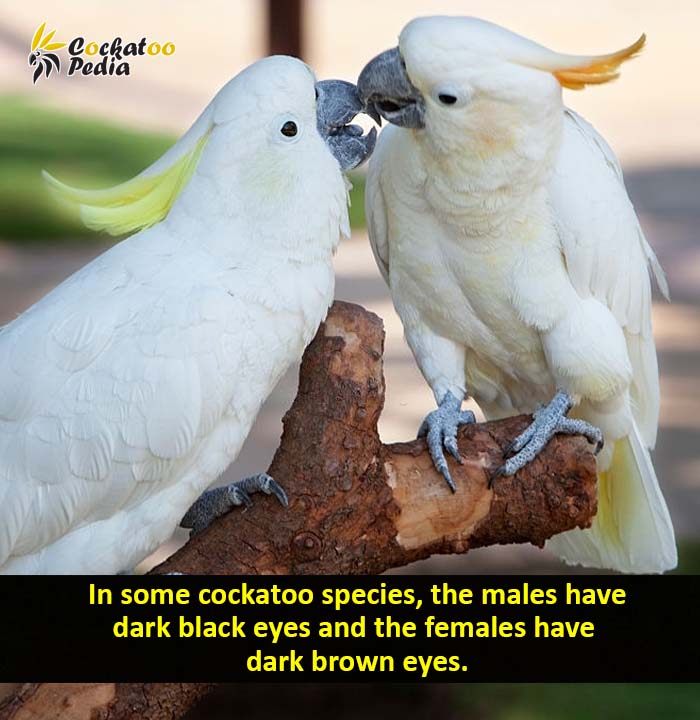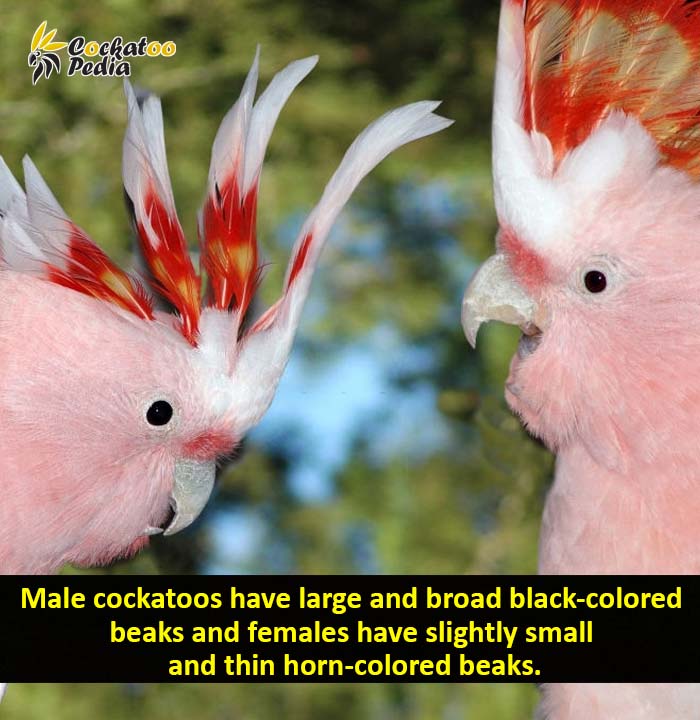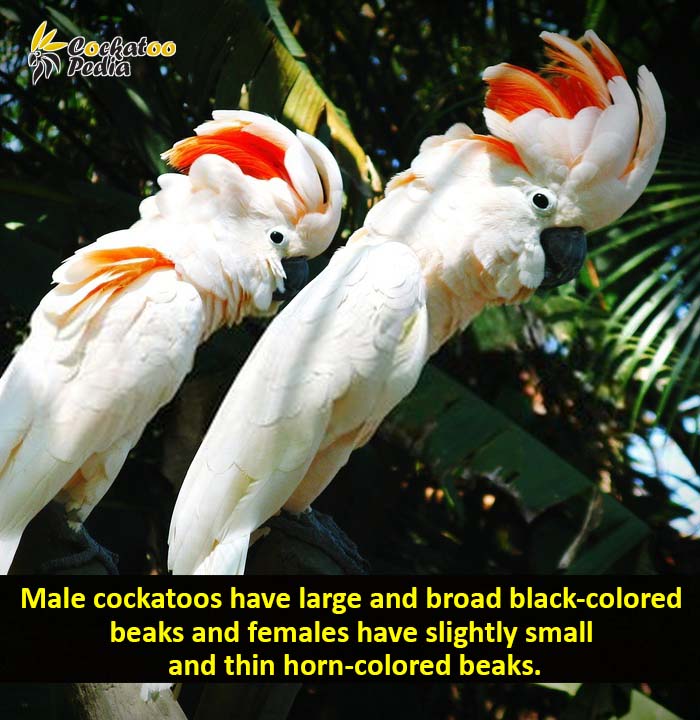Identifying the cockatoo gender can be challenging, especially if the males and females look the same. However, there are always some differences that help identify their gender. Let’s talk about all the possible differences between males and females.
Identifying the male and female in a bonded pair is easy; the males are greater and heavier than the females. Usually, the males are more vocal; they produce various sounds, and the females are less vocal. In the case of single and young cockatoos, gender identification can be difficult.
Following are different ways of identifying the gender, especially if both birds look the same and are not bonded. Check all of these factors in your cockatoos, and surely one of them will be helpful.
Feather (Plumage) Color Differences
In some breeds, the male cockatoos have extra light or dark feathers on their heads, and the female females have less colorful plumage. For example, in Gang Gang cockatoos, both genders are grey, but the male’s head is bright red, and the female’s head is grey and has a slight orange tinge on the belly.

Similarly, Red-Tailed Black cockatoo males have a clear black body with bright red feathers under the tail. The females have yellow spots on their faces and stripped orange-colored feathers under their tails.
Eye Color Differences
In some cockatoo species, eye color is also a way to tell the difference between a male and a female. The males have dark black eyes, and the females have dark brown eyes. For example, the Sulphur-crested cockatoo males have dark black eyes, and females have reddish-black eyes. However, this does not apply to all cockatoos breeds, and the young cockatoos can also have light-colored eyes.

Beak Shape and Color Differences
Generally, male cockatoos have large and broad black-colored beaks, and females have slightly small and thin horn-colored beaks.

In some breeds, the color can be different, but usually, the male has a dark-colored beak, and the female has a light-colored beak.
Behavioral Differences
One can tell about the gender of a cockatoo by observing its behavior. Male Cockatoos are usually careless and more aggressive than females. Whereas the female cockatoos show normal behavior and mostly remain busy preparing nests or searching for food. However, the female can get aggressive when it is in heat or taking care of babies.
Another difference is incubation; usually, the female incubates the eggs, and the male cockatoo rarely incubates the eggs.

Most cockatoo keepers use the above methods to identify the gender of their cockatoos but in some cases, the difference is not prominent. In such cases, it is recommended to adopt scientific ways like DNA sexing and surgical testing for cockatoos’ gender identification.
Surgical Testing
Surgical testing is not recommended. It is an old method of sexing parrots. In this method, the cockatoo is given anesthesia, and its internal sex organs are examined by making a hole in the body of the cockatoo.
This method is no longer practiced as the process is painful and harmful for the cockatoos. A better solution for cockatoo gender identification is DNA sexing.

DNA Sexing
DNA sexing is a modern method of gender identification. It is used all over the world by professional breeders and veterinary doctors. All you need for DNA sexing a cockatoo is a feather or toenail sample.
How much Does Cockatoo DNA Sexing Cost?
DNA sexing costs $20-25 with a feather sample and $17-22 with a toenail sample.
Conclusion:
Cockatoos can be visually identified as males and females. They have some behavioral differences too. But the most effective method is DNA se

